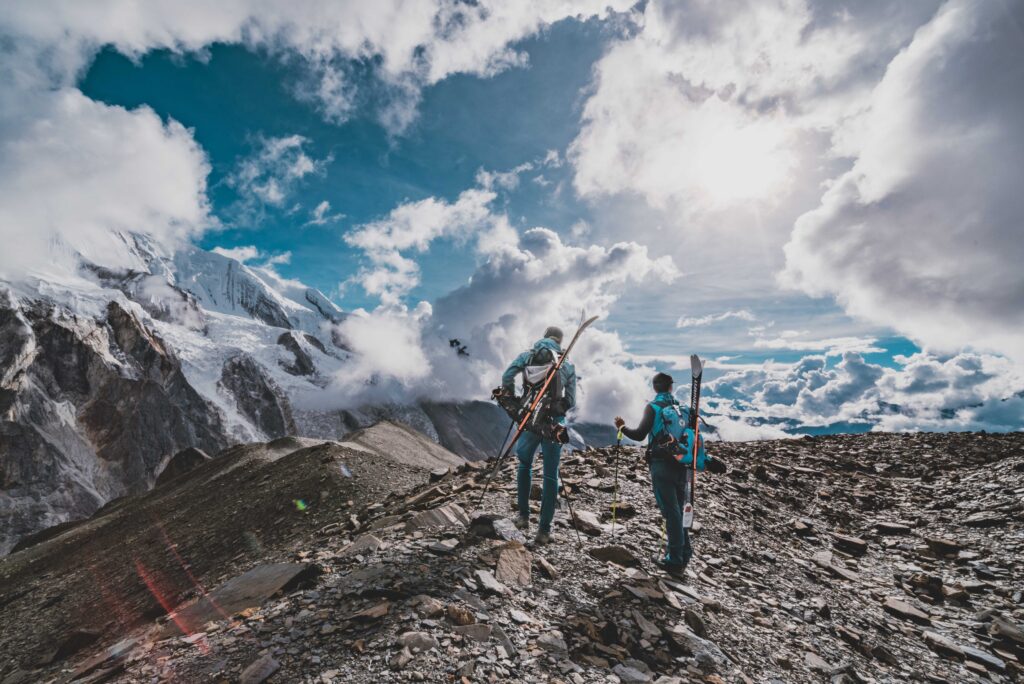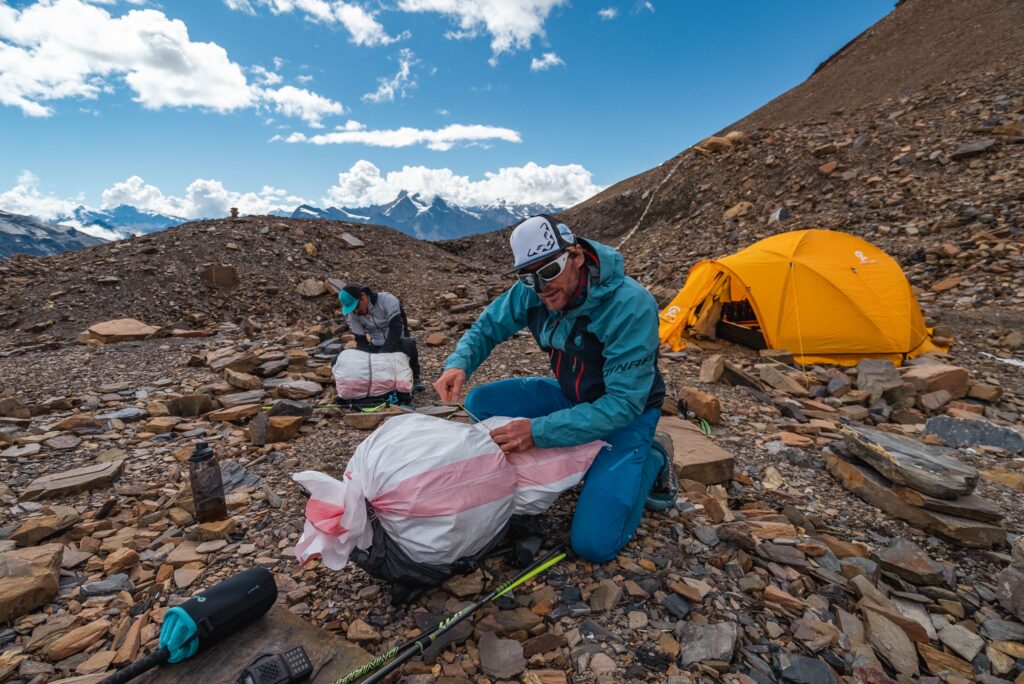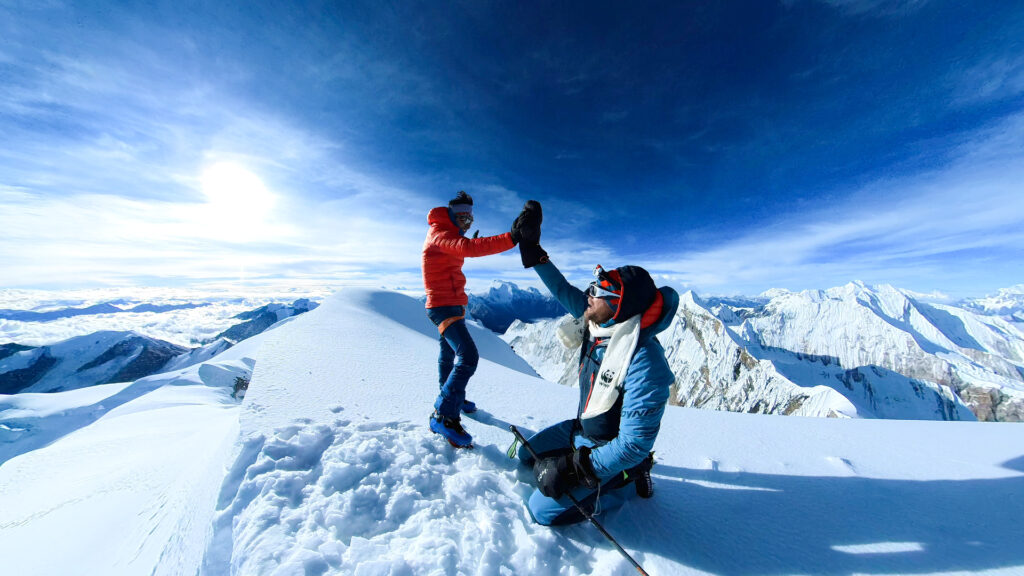Fast and Light with Dynafit’s Bene Böhm
Dynafit's General Manager Bene Böhm has chalked up several oxygen-free speed ski ascents on the world’s tallest summits.
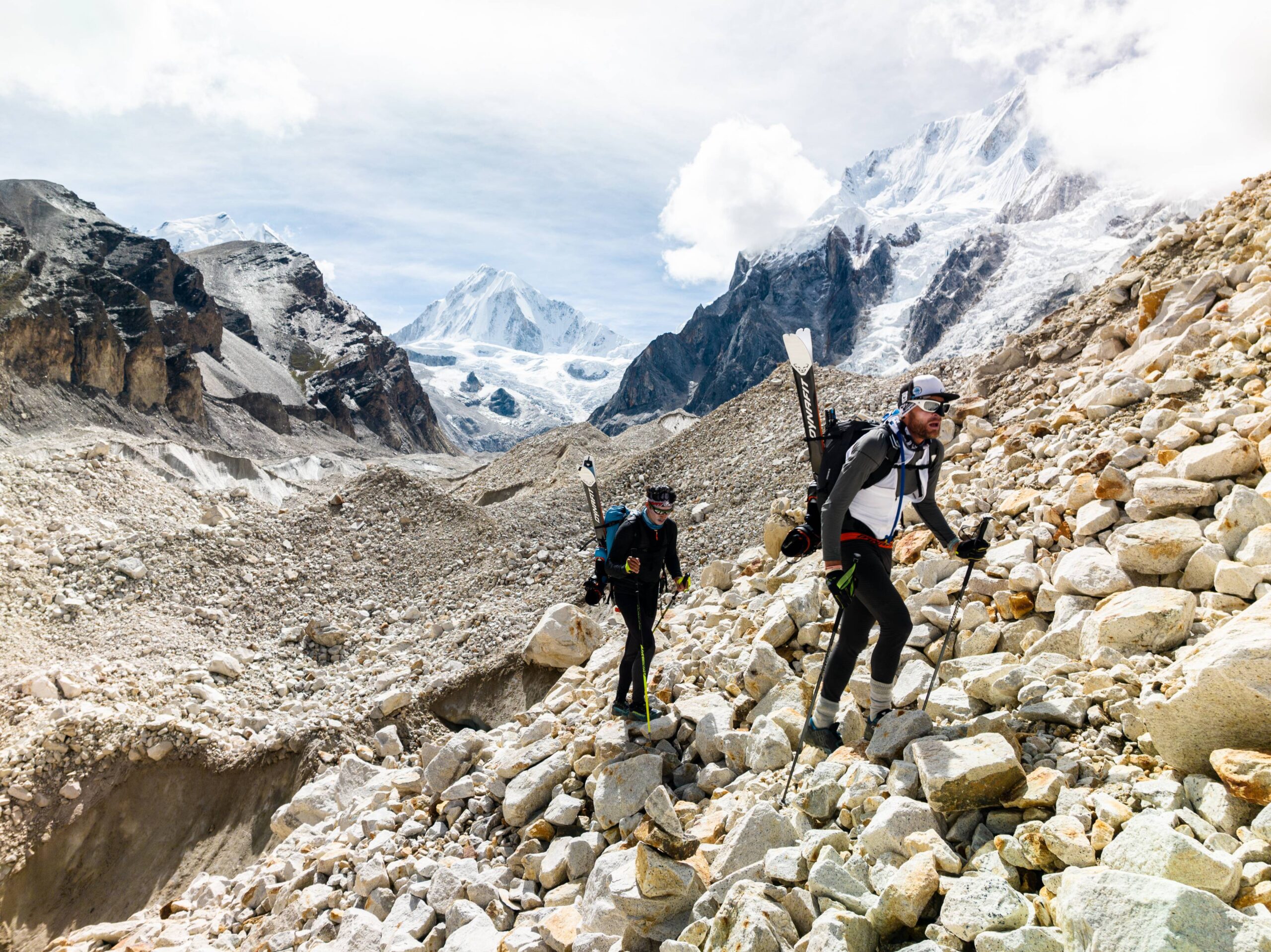

Amy Marwick: You’ve been home for about one month since your successful speed ascent of the Himlung Himal (7,126m) in Nepal. Did it all go to plan?
Benedikt Böhm: The expedition went exactly as I’d hoped, although there were a couple of hiccups at the beginning… I had a big bike crash just before and my whole face got totally messed up. Then I almost missed my flight, and once I finally got on the plane, I was hauled off again by the police explosion experts. I was holding this hard-case satellite modem for the trip’s media. Someone must’ve said, “there’s a guy with a bomb!”
After that it all went smoothly. We had a really interesting visit to the National Park first, where they’re running a lot of projects with the people there to protect nature. Giving them alternatives for income and survival is key, so that they don’t need to kill the animals or cut down the trees. That’s the main thing I learned – if you want to protect nature, you have to win the people over first.
I was there with Prakash Sherpa, a Nepalese professional climber – we had such a good time together. For the climb, we slept at Camp 2 to acclimatise and then we set out to see how far we would get. There were a few parts that we hadn’t managed to check, but we had absolutely perfect conditions and made it to the summit. A couple of days later we did the speed ascent in less than 10 hours.
AM: Why did you decide to climb and ski this mountain for your latest adventure?
BB: For the skiing – it’s always the first thing I’m looking for in an expedition. Secondly, I’m always asking, where is the biggest adventure? I’d be lying if I said Mount Everest wasn’t something I’d consider, but you could be at basecamp with 1,000 other people. I knew that on this mountain we’d be totally alone – we were the first people to go back there since 2019. We had to work out the route for ourselves and make mistakes along the way.
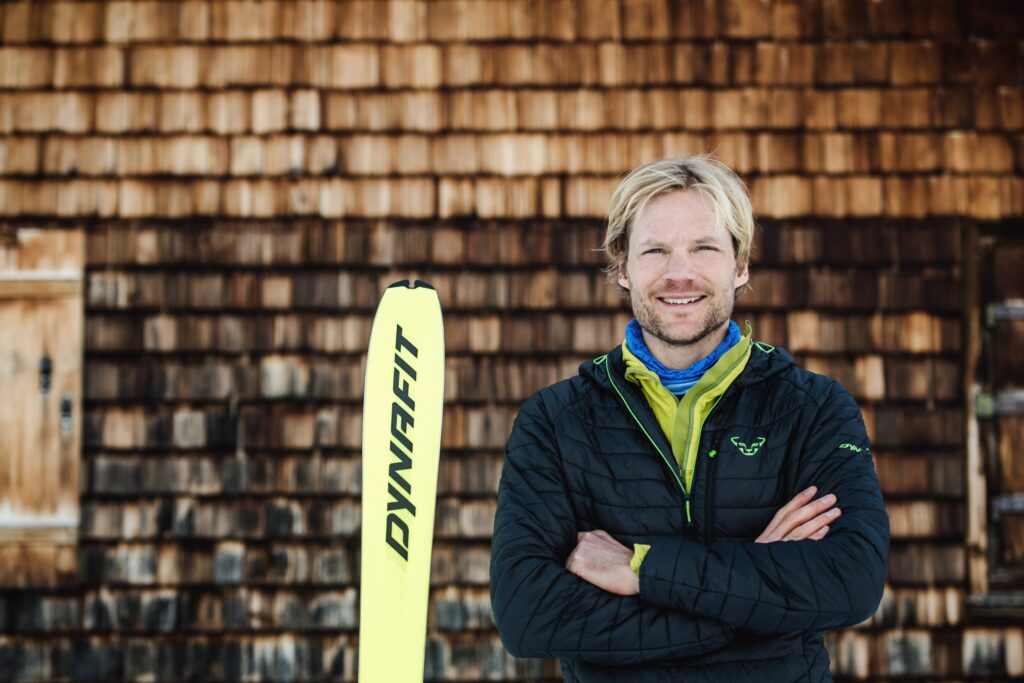
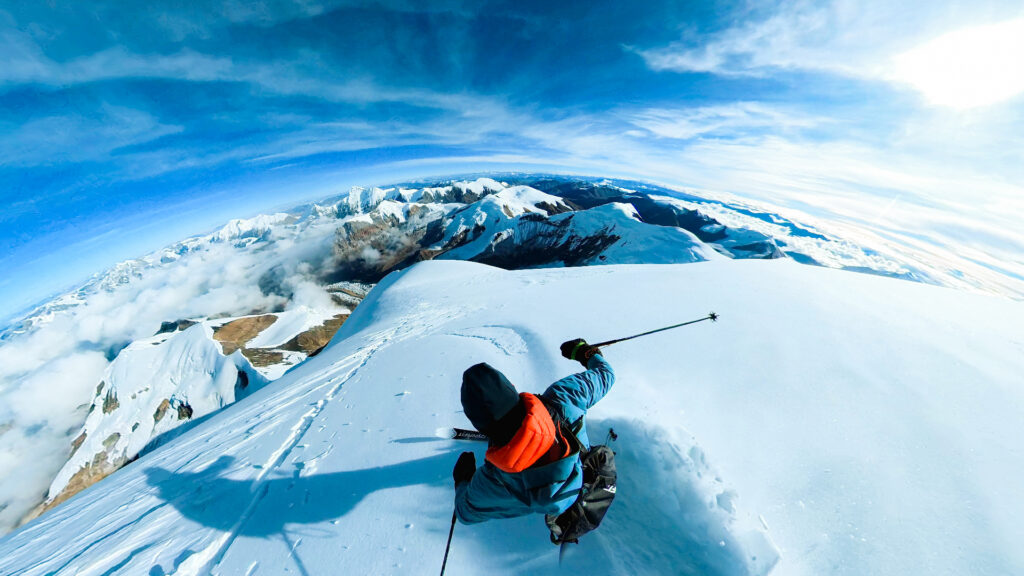
AM: How was the ski back down?
BB: The first time it was perfect conditions for skiing. Grippy, firm snow with powder on top – totally safe so you really could let go. I don’t think I’ve ever had it like that in the Himalayas. Although, when we did the speed ascent the conditions were horrible. There had been a lot of wind, so there was breakable crust and ice. I hardly made a turn – I was more side slipping…
AM: What draws you to such big mountains and how do you rationalise the risk?
BB: I love that these expeditions are so remote. That real adventure and knowing you are by yourself – there’s no mountain rescue to call. It is a different beast in higher mountains, although I’ve been challenged in the Alps just as much. I try to be disciplined and my risk-taking has gone down over the years. If the conditions don’t match my personal requirements, I’ve learned to have confidence just to say, “I’m not doing it today”.
AM: What is it about speed ascents that excites you? Why not just take your time?
BB: You can’t really enjoy anything up there with minus 70% oxygen, so why not move fast? I spent my whole life in endurance sports, competing from the age of 11 in cross-country ski races, so it’s always been about speed for me. It also makes sense to move quickly in order to reduce risk and spend as little time as possible in the death zone.
It’s also a spiritual experience – speed is an art. You have to allow yourself to be fast. Our time here is short so for me, it’s all about how you spend that time. In German, lightness also means to simplify things, to reduce complexity. You have to be so detailed to be able to move this fast. Our total weight for skis, boots, equipment, gear, drinks, food and everything was just 6kg each.
AM: What’s the most important factor when it comes to designing gear for these fast-moving ascents?
BB: Weight is important, but speed is not just about being fast, it’s about being well prepared so there’s no need to stop. You can’t run at 7,000m, but how often do you need to stop? We don’t want to interrupt the flow by taking a drink or a gel, putting on crampons or skis on our backs. It’s all about finding that perfect state of flow and the gear has to help with that.
AM: How does this translate to the rest of the Dynafit ski touring range?
BB: We want our gear to facilitate the user, whatever their objective. Ski touring is not an easy sport, it’s complex. You need knowledge, risk management, the right partners, and all this clothing and equipment. There are a lot of variables, but we want to reduce the complexity of the kit wherever we can to make it more accessible and fun. Whether that’s comfort for long days ski touring or quick access to equipment when you’re up against the clock.
AM: What’s your favourite bit of Dynafit kit?
My favourite is the speed-touring range. We took inspiration from cross-country ski racing –hardcore uncompromising gear but with the durability for a lifetime. That’s part of the Dynafit experience and our contribution to a more sustainable future – gear that lasts. The most sustainable product is the one you already have.
AM: How do you balance the training, planning and executing these huge expeditions alongside your work, and being a dad?
BB: I’m not always on top of everything! I know I’ll regret not spending enough time with the kids, but this is who I am. If you depress who you are you can become very unhappy. I’m also just very conscious of time – life is short. I have to say ‘no’ to a lot of things, prioritise carefully, and leave nothing spare. If I have to get up at two or three in the morning to train for an expedition, I will. It’s the biggest luxury and gift that my body and mind are still working so that I can still do these things – that’s my motivation.
AM: Where would you like to go next?
BB: I have a project in mind for the Alps, but I would love to do another 8,000m peak. I love Nepal, because it’s very open and welcoming – you can have great conversations with the people. It’s not only about the goal for me anymore, I want to have a good time, and have a cool partner to have fun with. It’s my holiday time, so it has to be more than just a summit.
